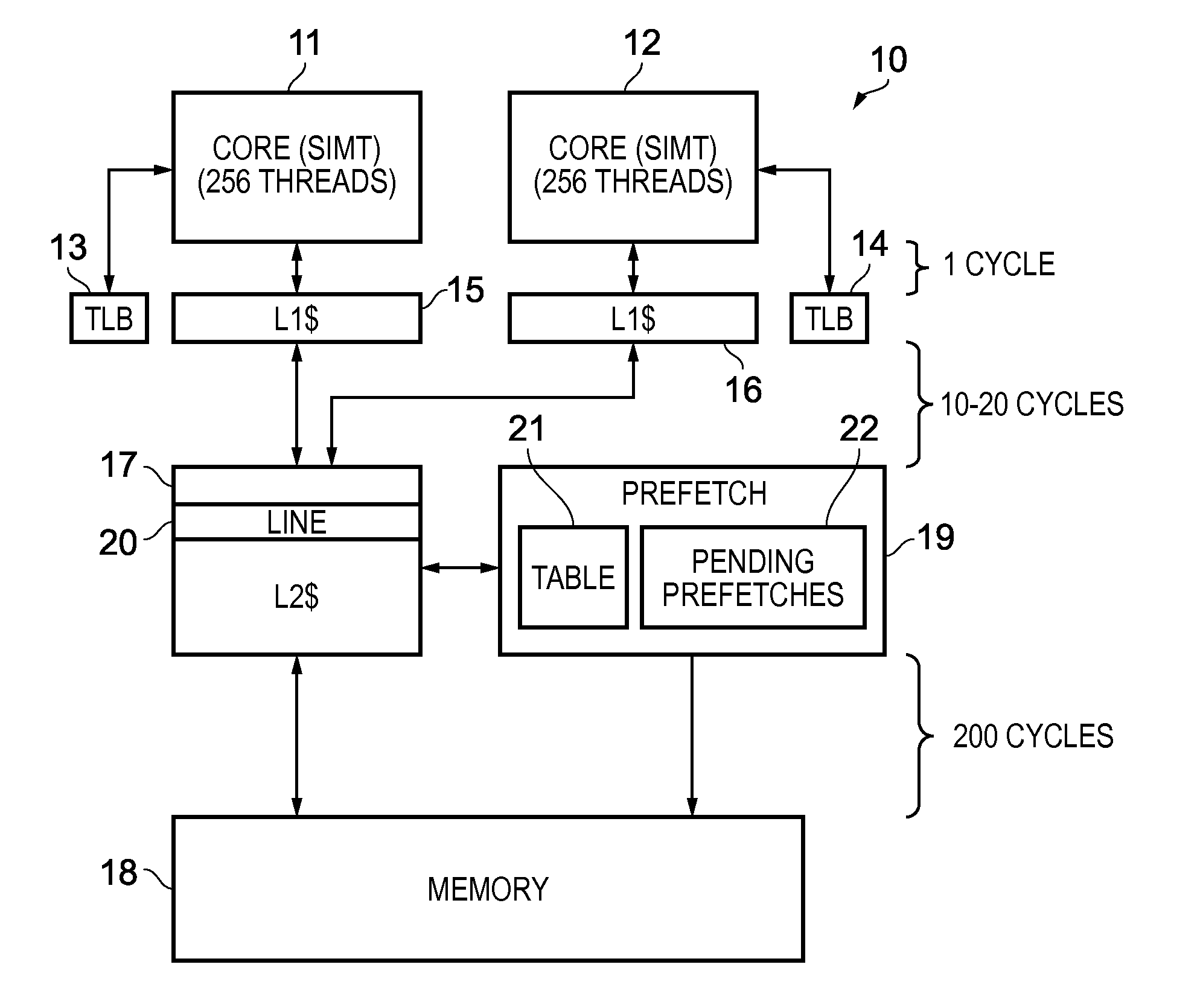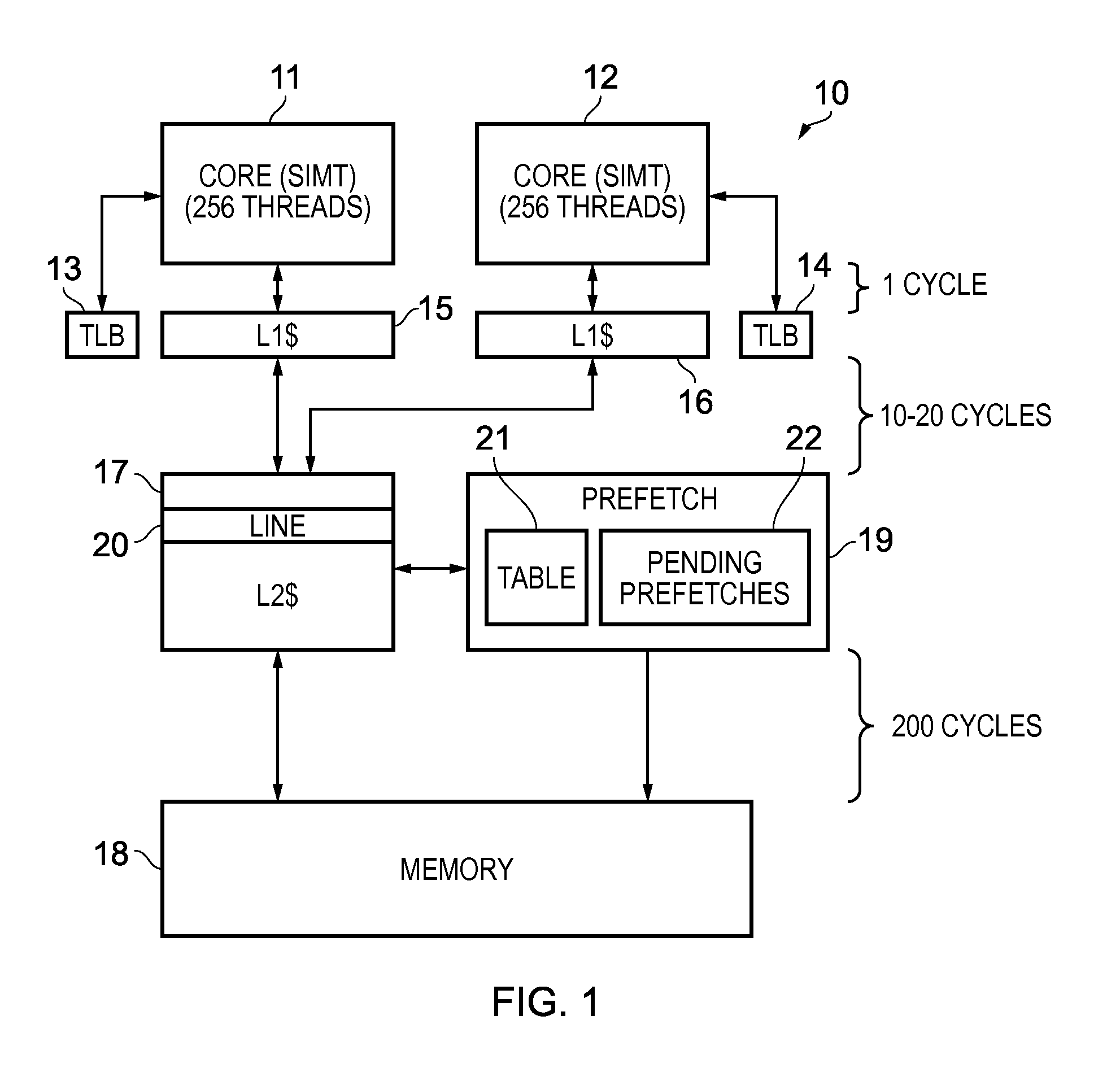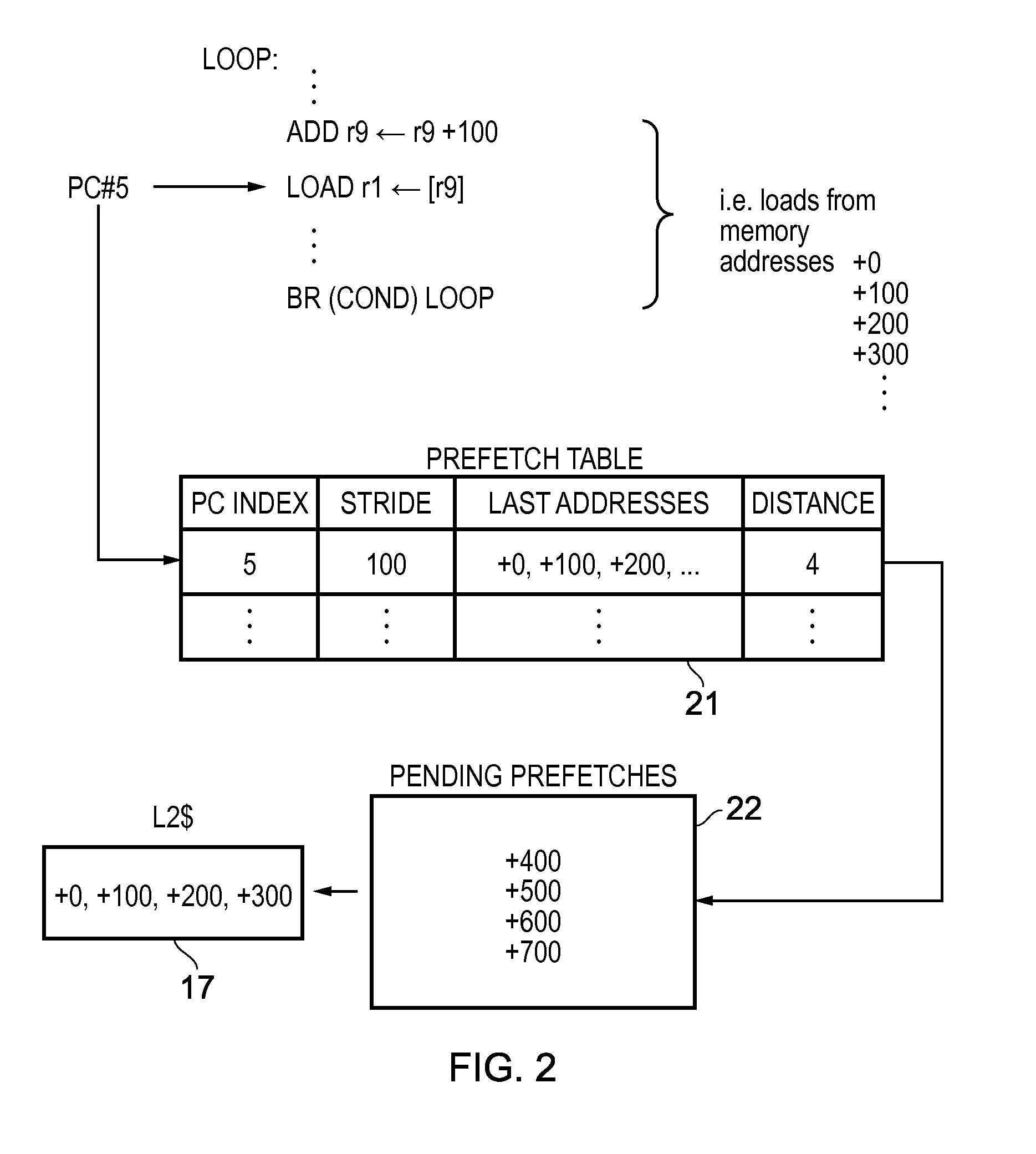Adaptive prefetching in a data processing apparatus
a data processing apparatus and prefetching technology, applied in the field of data processing apparatuses, can solve the problems of data values being stored in the cache for a long time, serious performance impediment to the operation of the data processing apparatus, memory latency associated with the retrieval of data values from memory, etc., and achieve the effect of using up more memory bandwidth
- Summary
- Abstract
- Description
- Claims
- Application Information
AI Technical Summary
Benefits of technology
Problems solved by technology
Method used
Image
Examples
Embodiment Construction
[0039]FIG. 1 schematically illustrates a data processing apparatus 10 in one embodiment. This data processing apparatus is a multi-core device, comprising a processor core 11 and a processor core 12. Each processor core 11, 12 is a multi-threaded processor capable of executing up to 256 threads in a single instruction multi-thread (SIMT) fashion. Each processor core 11, 12 has an associated translation look aside buffer (TLB) 13, 14 which each processor core uses as its first point of reference to translate the virtual memory addresses which the processor core uses internally into the physical addresses used by the memory system.
[0040]The memory system of the data processing apparatus 10 is arranged in a hierarchical fashion, wherein a level 1 (L1) cache 15, 16 is associated with each processor core 11, 12, whilst the processor cores 11, 12 share a level 2 (L2) cache 17. Beyond the L1 and L2 caches, memory accesses are passed out to external memory 18. There are significant differen...
PUM
 Login to View More
Login to View More Abstract
Description
Claims
Application Information
 Login to View More
Login to View More - R&D
- Intellectual Property
- Life Sciences
- Materials
- Tech Scout
- Unparalleled Data Quality
- Higher Quality Content
- 60% Fewer Hallucinations
Browse by: Latest US Patents, China's latest patents, Technical Efficacy Thesaurus, Application Domain, Technology Topic, Popular Technical Reports.
© 2025 PatSnap. All rights reserved.Legal|Privacy policy|Modern Slavery Act Transparency Statement|Sitemap|About US| Contact US: help@patsnap.com



